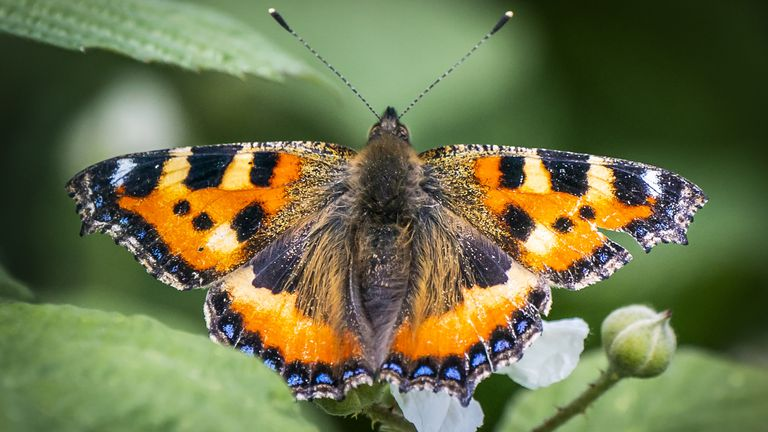Britons urged to stop mowing to help butterflies thrive.
According to studies, allowing a portion of a garden to grow wild with long grass increases butterflies, according to conservation specialists. Of the 59 butterfly species found in the UK, 51 had fewer individuals last year than in 2023.
Since over half of butterfly species in the UK are currently experiencing long-term declines, conservation experts are advising homeowners not to mow their lawns in the upcoming months to increase butterfly populations.
One of the worst butterfly seasons ever happened last year, with 51 of the 59 species found in the UK experiencing a drop in population when compared to 2023 data.
According to researchers, human activity, pesticide use, and climate change are the main causes of the decline.
Renowned butterfly species, such as the small tortoiseshell, chalk hill blue, and small copper, had their worst year ever, according to the UK Butterfly Monitoring Scheme, which is managed by a consortium of conservation organizations.
Additionally, it was the second-worst year since monitoring began in 1976 for common blue, gatekeeper, and large white butterflies, which are prevalent in gardens, parks, and rural areas.
“I regret to inform you that human activity is to blame for the decline of our beloved British butterflies,” said Richard Fox of Butterfly Conservation.
“We are altering the climate, destroying wildlife habitats, polluting the ecosystem, and using pesticides extensively.
“That means that when we have poor weather, these already-depleted butterfly populations are highly vulnerable and can’t bounce back like they once did – and with climate change, that unusual weather is becoming more and more usual.”
“Significant” drops in certain species
According to data, 31 species have experienced a sustained decline.
According to experts, this includes 22 species that have seen notable decreases, including common butterflies like the little tortoiseshell, whose population has fallen by 86% since 1976.
The chalk hill blue, small pearl-bordered fritillary, and grizzled skipper all suffered their worst year ever, and the green-veined white has decreased by 28%.
According to conservationists, such species needed a specialized habitat, which had been lost during the previous century, to exist.
The findings were “deeply concerning,” according to Dr. Marc Botham, a butterfly ecologist at the UK Centre for Ecology and Hydrology, especially since “they can tell us about the health of the wider environment.”
How can butterflies be helped?
Following the worst-ever outcomes of its Big Butterfly Count last year, Butterfly Conservation issued a “butterfly emergency” for the entire United Kingdom.
“More habitat” was called the “best thing we can do” by Dr. Fox.
According to a study, allowing a portion of a garden to grow wild with long grass boosts the number of butterflies.
“That is why we are calling on people and councils across the UK to pledge to not cut their grass this year from April to September, this simple act can make a real, immediate difference to butterflies, moths and other wildlife,” he stated.
Read More: National Living Wage rises, but higher costs follow.





